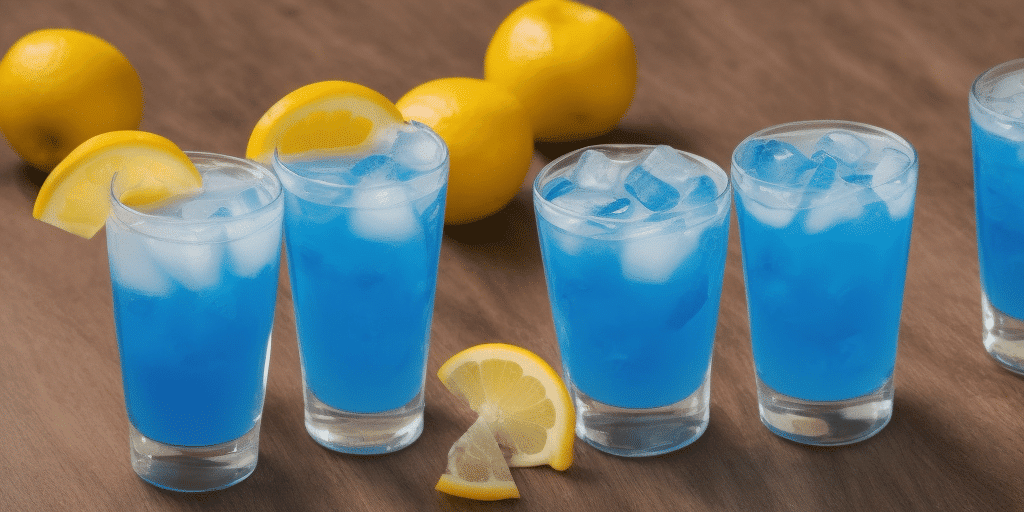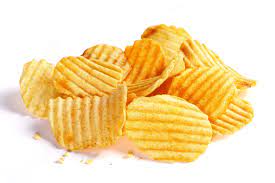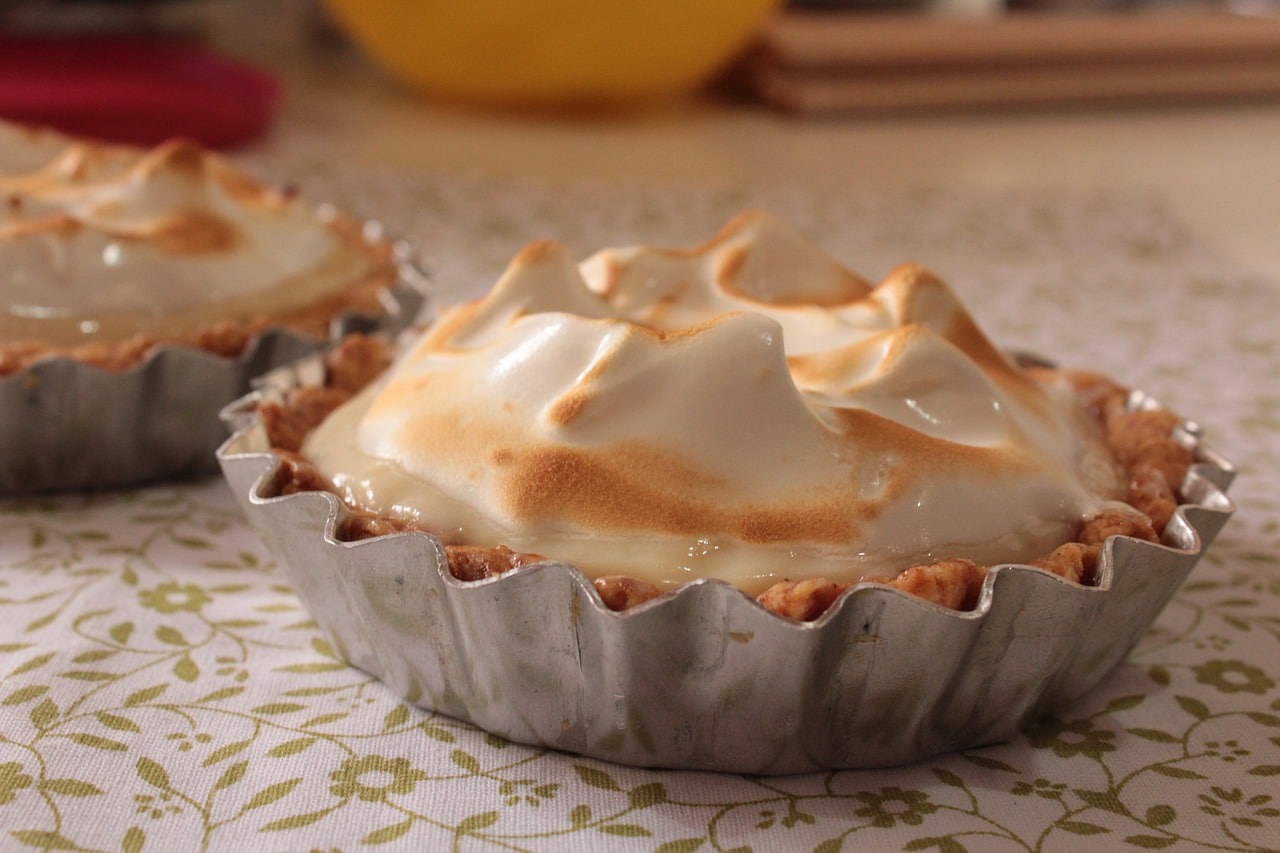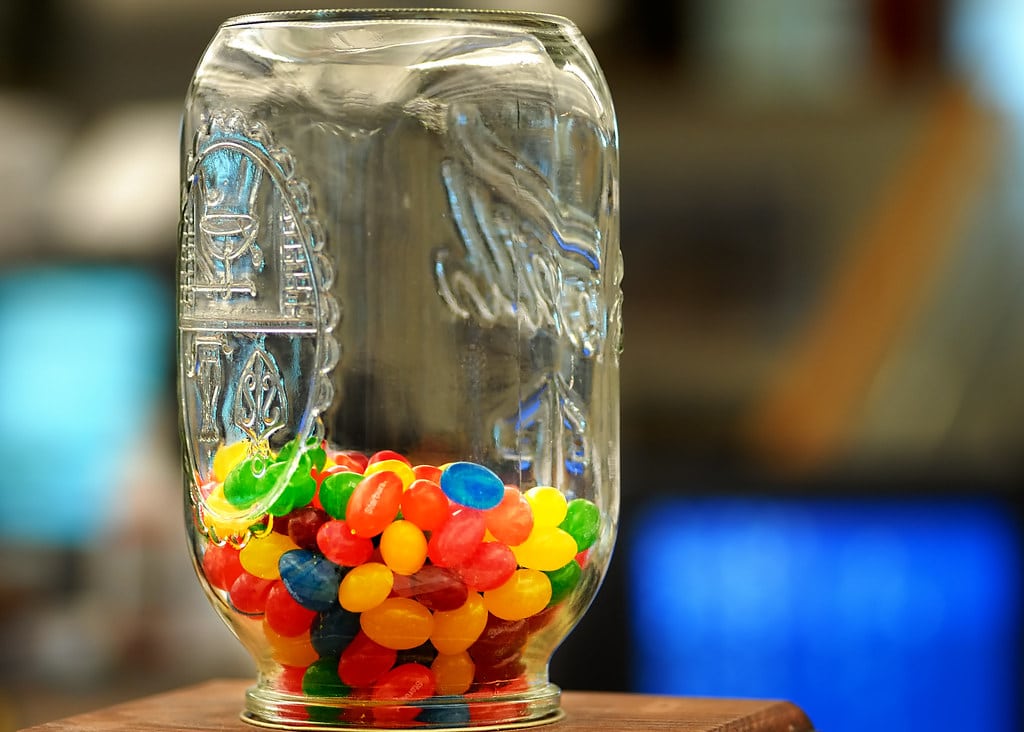Ever thought about mixing things up in the kitchen by swapping teaspoons of something with garlic cloves while cooking a delicious meal?
This will frustrate you and possibly ruin your meal as a result.
How much is one clove of garlic anyway?
We are here to help you understand garlic in cloves and standard measuring tools like teaspoons.
So, one clove of garlic is how many teaspoons?
A clove of garlic equals 1/2 – 1 teaspoon chopped or minced garlic.
Garlic bulbs and cloves’ sizes vary; hence small cloves will equal 1/2 teaspoon, whereas the big ones will go up to 1 teaspoon.
In measuring these values, we use the popular US teaspoon, which is the standardized measuring teaspoon for ingredients.
This post will guide you through everything there is to know about garlic cloves and teaspoons.
We’ve got you covered, from comparing the two measurements to measuring with other standard kitchen utensils and incorporating garlic cloves in recipes.
Read on to learn more.
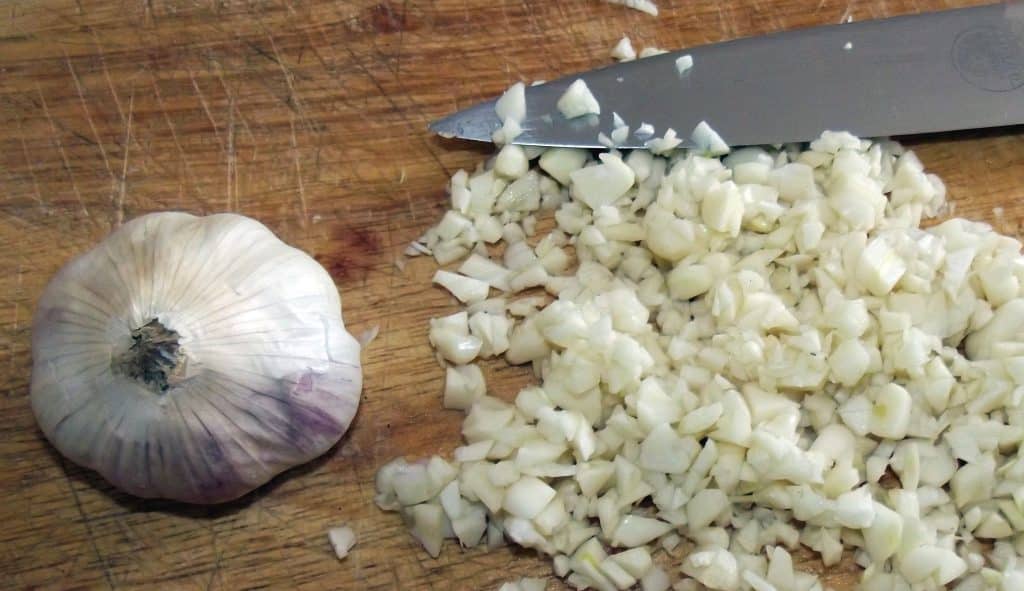
How much is a garlic clove?
Garlic cloves are the small, segmented pieces that make up the garlic bulb.
The cloves are covered in light papery skin to constitute a garlic head (bulb).
Naturally, garlic heads vary in size and number of cloves, but on average, one head contains about 10 – 12 cloves.
The size of garlic cloves also varies, but on average, one clove is about 1/2 – 1 teaspoon chopped or minced garlic.
Cooking with one clove also means cooking with 1/2 – 1 teaspoon of minced garlic.
Always measure garlic using a standard spoon; otherwise, your measurement will not be precise, which may ruin the dish’s taste.
For easy reference and checklist, you can use the guide below:
- 1 garlic clove = 1/2 – 1 teaspoon
- 2 cloves = 2 teaspoons
- 3 cloves = 3 teaspoons
- 4 cloves = 4 teaspoons
- 5 cloves = 5 teaspoons
- 8 cloves = 8 teaspoons
- 10 cloves = 10 teaspoons
- 12 cloves (1 bulb) = 12 teaspoons
Measuring garlic using tablespoons
A tablespoon is a popular kitchen utensil that many chefs are familiar with.
A typical US tablespoon is a standardized tool for measuring ingredients.
Its capacity is 15 ml, 3 teaspoons, and 1/16 of a standard cup.
When measuring garlic cloves using tablespoons, 1 clove equals 1/3 tablespoon.
This means that 2 cloves equal 2/3 tablespoons, and 3 cloves will make up 1 tablespoon.
This conversion is summarized in the guide below:
- 1 garlic clove = 1/3 tablespoon
- 2 cloves = 2/3 tablespoons
- 3 cloves = 1 tablespoon
- 4 cloves = 1 tablespoon plus 1 teaspoon
- 5 cloves = 1 tablespoon plus 2 teaspoons
- 8 cloves = 2 tablespoons plus 2 teaspoons
- 10 cloves = 3 tablespoons plus 1 teaspoon
- 12 cloves (1 garlic bulb) = 4 tablespoons
Always use a standard tablespoon when measuring your chopped and minced garlic.
Fill the tablespoon to the brim, then level it off using a flat knife or kitchen spatula.
This will ensure accurate measurements as per the recipe for the food to turn out correctly.
Teaspoons are more convenient and accurate for measuring small garlic amounts, while tablespoons are suitable for larger values.
If your recipe calls for a huge quantity of garlic, like many bulbs or cloves, then tablespoons will be preferable for better precision.
Measuring garlic using a cup
A cup is another common kitchen utensil that many home cooks and chefs are familiar with.
It’s mainly utilized for measuring larger amounts of ingredients, often in liquid form like milk, soup, or broth.
The standard capacity of a cup is 236 ml, equivalent to 8 fluid ounces.
A standard cup equals 16 tablespoons and 48 teaspoons (standard spoons).
When using cups for measuring garlic cloves, 1 clove equals 1/48 of a cup, while 2 cloves make up for 1/24 of a cup.
This means that 3 cloves will equal 1/16 of a cup, and so forth.
See the guide below for more specific conversions:
- 1 garlic clove = 1/48 cup
- 2 cloves = 1/24 cup
- 3 cloves = 1/16 cup
- 4 cloves = 1/12 cup
- 5 cloves = 5/48 cup
- 10 cloves = 5/24 cup
- 12 cloves (1 garlic head) = 1/4 cup
This also means that:
- 1 cup = 48 garlic cloves
- 1/2 cup = 24 cloves
- 1/4 cup = 12 cloves
- 1/3 cup = 16 cloves
- 2/3 cup = 32 cloves
- 3/4 cup = 36 cloves
When measuring minced garlic using a cup, place the cup on a flat surface and fill it to the required measurement.
Level the cup using the flat of a knife and read horizontally to ensure accuracy.
Recipes use a cup to measure vast amounts of garlic.
Using other-sized cups is not advisable if you don’t have a standard cup.
However, you can use other graduated or calibrated containers for measurements.
How to prepare garlic for cooking
Garlic is a versatile ingredient; to use it perfectly, you need to prepare it correctly.
The following are procedures for preparing garlic:
Separating the cloves
The first step is to separate the cloves from the garlic head.
You can do this by smashing the garlic head with your knife and then carefully peeling away the skin to reveal the cloves.
Once you have separated the cloves, you peel off their skins.
The easiest way is to place them in a small bowl and cover them with boiling water.
Leave them to soak for 1 – 2 minutes, then drain and rinse under cold water.
The skins should now slip off easily.
Chopping the cloves
Chop the garlic cloves by cutting them into tiny pieces using a sharp knife.
You can cut the cloves in different directions or stack them up and cut them together.
You can also grate them or use a garlic press if you want them in even smaller pieces.
Mincing the cloves
Mincing is a method that results in much smaller pieces than regular chopping.
To mince the garlic, chop it, then use a back and forth slicing motion while dragging the knife across the garlic.
You can use different kitchen utensils to mince your garlic, such as a pestle and mortar, food blender, garlic press, or food processor.
Finer pieces of garlic are recommended to release the ingredient’s flavor and aroma.
The garlic is more potent and will have a more powerful taste when used in mashed or minced form than in bigger pieces.
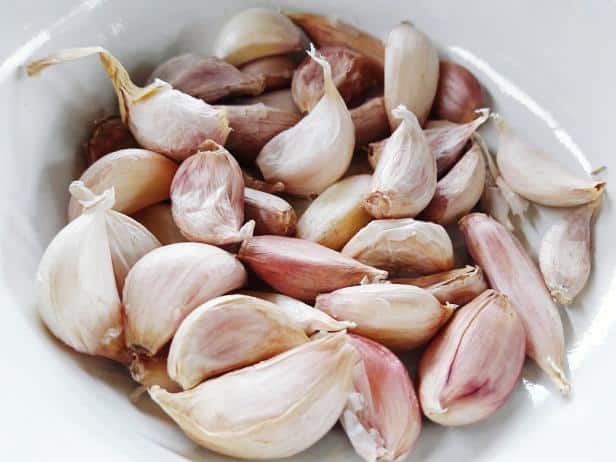
How can I store garlic?
You can store garlic in different ways, depending on how you plan to use it.
Safely store whole bulbs in a cool, dark place with good air circulation.
A kitchen cupboard away from the stove is ideal.
You can also keep garlic in the pantry or cellar.
However, check them regularly as garlic stored in warm or humid conditions can sprout or start to rot.
When you have peeled the cloves and exposed them to air, store them in the refrigerator, lest they oxidize and start turning brown.
They can stay in the fridge for up to two weeks.
If you want them to last longer, place the cloves in a freezer bag and store them in the freezer for up to six months.
You can also buy garlic that has been previously peeled and stored in oil.
This garlic can last for several months when stored in the fridge.
Garlic will go bad if not stored appropriately.
Signs that garlic has gone bad include sprouting, browning, and mold growth.
If you notice these signs, throw the garlic away as it’s not fit for consumption.
Frequently asked questions (FAQs)
What will happen if I use the wrong garlic measurements?
If you use the wrong garlic measurements, your dish will not taste as intended.
Using the correct measures to get the desired flavor and consistency is essential.
Can I combine garlic with other ingredients?
You can combine garlic with other ingredients as it goes well with a variety.
Common combinations include garlic with ginger, onion, thyme, and basil.
You can also combine garlic with vegetables such as carrots, potatoes, and tomatoes.
Observe the cooking times of the other ingredients and ensure they blend well with garlic.
Can I use jarred garlic instead of fresh minced garlic?
You can use jarred garlic as a substitute for fresh garlic.
However, the flavor and aroma of jarred garlic are not as potent as that of fresh garlic.
Therefore, you may need more jarred garlic than fresh minced garlic to get the same flavor.
Is it necessary to peel garlic before using it?
You don’t necessarily have to peel garlic before using it.
If you’re pressed for time, you can use unpeeled garlic cloves.
However, peeled garlic cloves are easier to chop and mince.
They also release their flavor and aroma more easily than unpeeled cloves.
How can I make my garlic dish less pungent?
If the garlic flavor is too strong, add other ingredients such as onion, ginger, or lemon juice to balance it out.
You can also cook the garlic for less time or at a lower temperature to reduce its pungency.
Should I add water to minced garlic?
You shouldn’t add water to minced garlic.
Water will make the garlic less flavorful and can cause it to become mushy.
If you want to add moisture to your dish, use broth or other liquids.
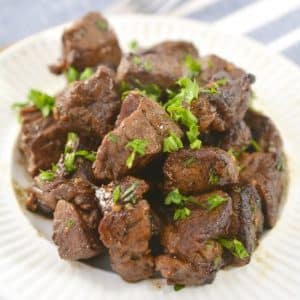
Garlic Butter Steak Bites Recipe
Equipment
- 2 large bowls
- 1 oven
- 1 saucepan
- 1 knife
- 1 cutting board
- 1 spoon
Ingredients
- 1/3 pound beef steaks
- 1/2 cup unsalted butter
- 1 cup olive oil
- 4 cloves garlic
- 1 tablespoon rosemary leaves minced
- 1 teaspoon kosher salt
- 1/2 teaspoon black pepper freshly ground
- 2 tablespoons lemon juice fresh
- 1/4 teaspoon red pepper flakes crushed
- 1 teaspoon thyme dried
- 1/2 teaspoon paprika smoked
- 1 teaspoon Worcestershire sauce
- 1 teaspoon mustard dry
- Pinch cayenne pepper
- 1 cup parsley finely chopped
- 1/4 cup chives finely chopped
- 1/2 cup parmesan cheese grated
Instructions
- Step 1: Preparing the Steak Bites
- To begin, place your steaks in a large bowl and add the crushed red pepper flakes, Worcestershire sauce, and dry mustard.
- Mix well to coat both sides of each steak evenly.
- Let sit for 10 minutes before moving on to step 2.
- In another large bowl, mix together the butter, olive oil, garlic, rosemary, salt, pepper, and lemon juice.
- Stir until everything is combined, making sure the garlic is completely coated in the mixture.
- Add the steaks to the marinade and flip them over to coat both sides with the mixture.
- Cover the bowl with plastic wrap and let sit for 15 minutes.
- Don’t forget to turn the steaks halfway through so that they’re evenly coated.
- Step 2: Cooking the Steak Bites
- Once the steaks have finished marinating, it’s time to put them in the oven.
- Set the temperature to 375 degrees Fahrenheit and bake the steaks for 12 to 15 minutes per side.
- When done, remove them from the oven and set aside to cool down.
- Step 3: Creating the Garlic Butter Sauce
- While the steaks are cooling down, prepare the garlic butter sauce by melting the butter in a saucepan over medium heat.
- Once melted, add the garlic and stir constantly for one minute.
- Next, add the rosemary, salt, pepper, red pepper flakes, thyme, paprika, Worcestershire sauce, and dry mustard.
- Stir until combined.
- Next, add the lemon juice and stir again until the sauce is smooth and creamy.
- Add the cayenne pepper, parsley, and chives and stir until everything is mixed thoroughly.
- Turn off the heat and pour the sauce into a bowl to cool down.
- Step 4: Assembling the Steak Bites
- After the steaks have cooled down, it’s time to assemble the garlic butter steak bites.
- Using a sharp knife, cut each steak into four equal pieces.
- Then, using a spoon, scoop out the center of each piece to create a cavity.
- On a cutting board, spread the cooled garlic butter sauce across the bottom of a large cast iron skillet.
- Make sure to cover the entire surface area of the skillet.
- Place the steaks into the skillet and fill the cavities with the parsley, chives, and grated parmesan cheese.
- Once the ingredients are placed, carefully pour the remaining sauce over the top and cook the garlic butter steak bites in the oven for five minutes.
- Remove from the oven and serve warm.
Video
Nutrition
Conclusion
Garlic cloves are the basic measuring units of this ingredient in recipes.
With this knowledge and guide of conversions between cloves, spoons, and cups, you can follow any recipe that calls for garlic without worrying about the measurements and their precision.
This will ensure that your dish comes out tasting as intended, and you’ll always enjoy great garlic dishes.
Use the right amount of garlic and enjoy its flavor and aroma in your food.
- Easy Smoked Salmon Recipe - July 2, 2025
- Clam Juice Recipes That Will Make You Feel Alive - July 2, 2025
- Freckle Juice Recipe: The Cure for All Your Freckles - July 2, 2025
